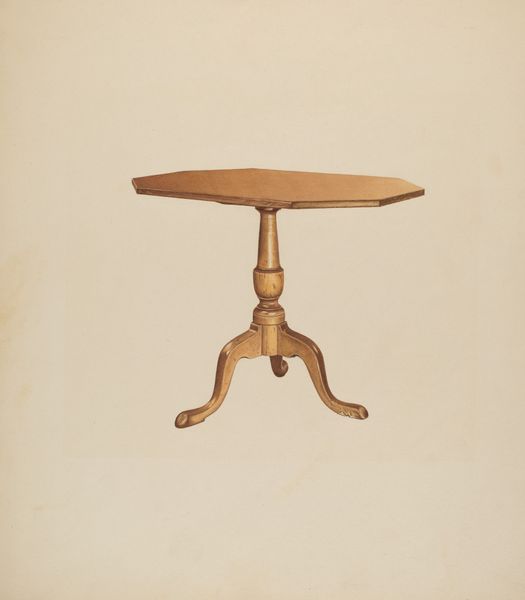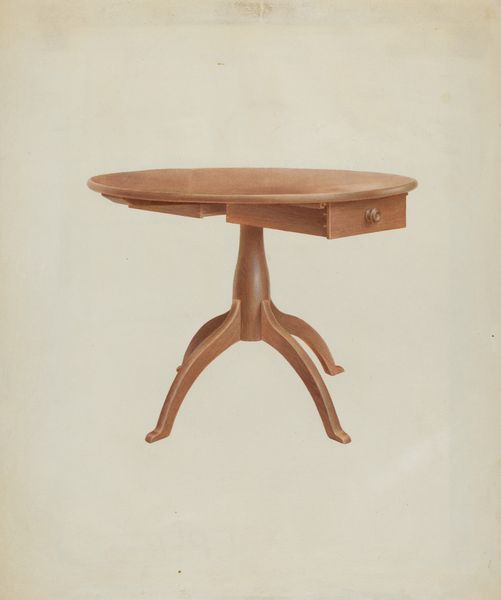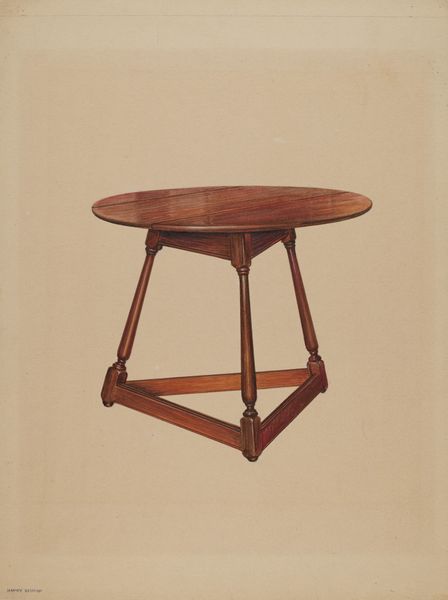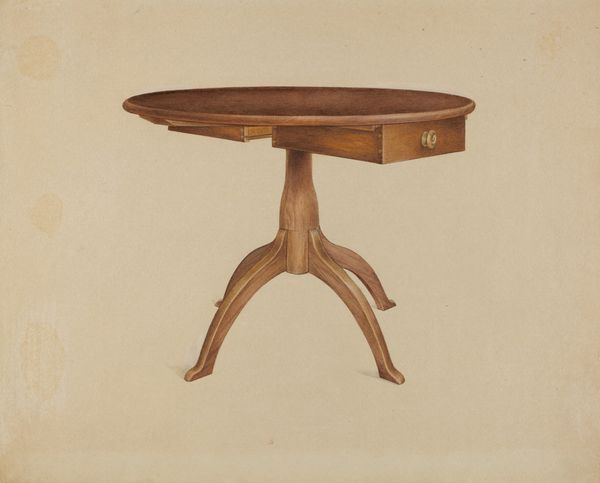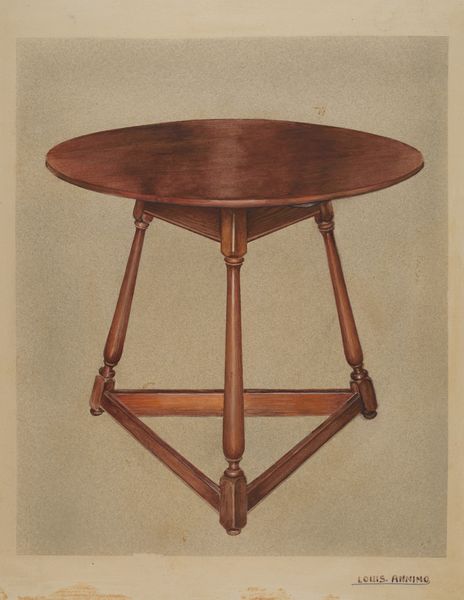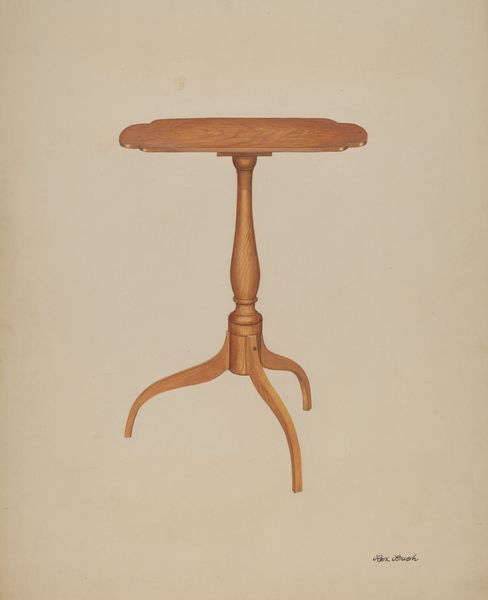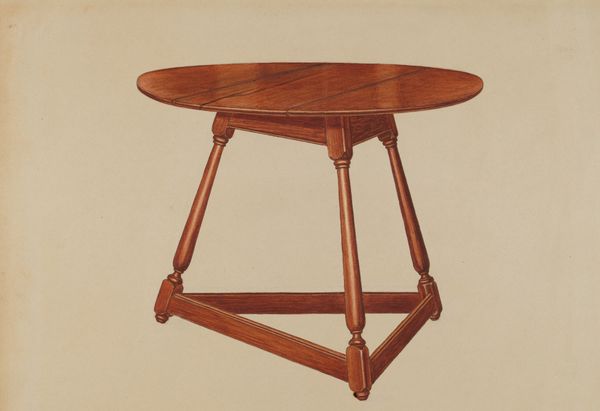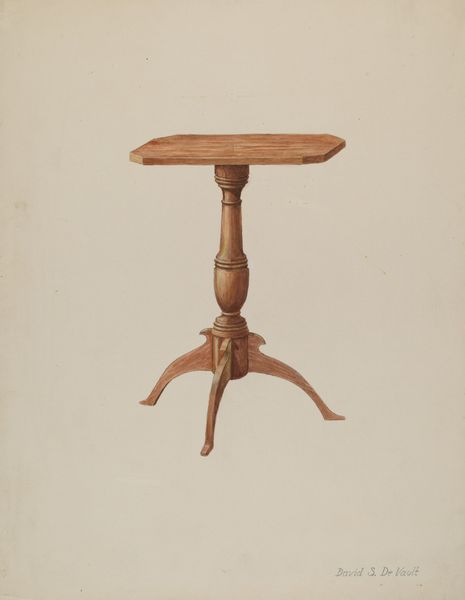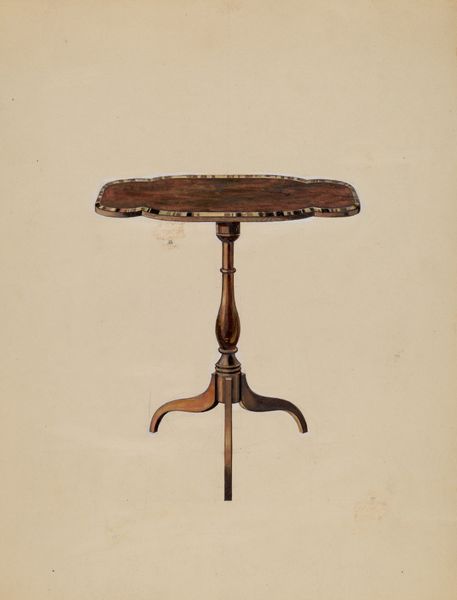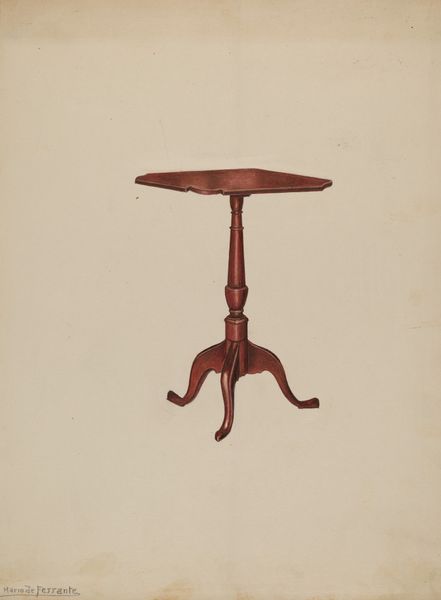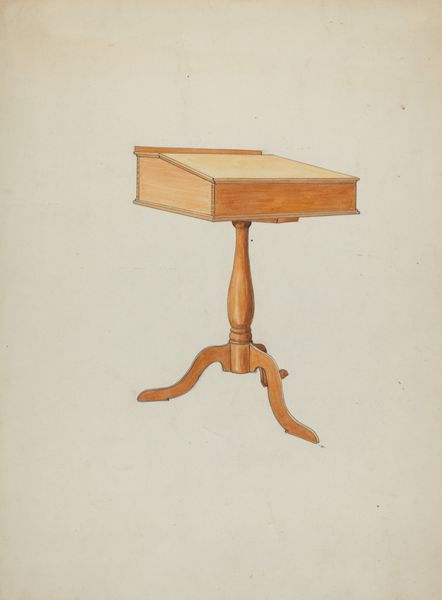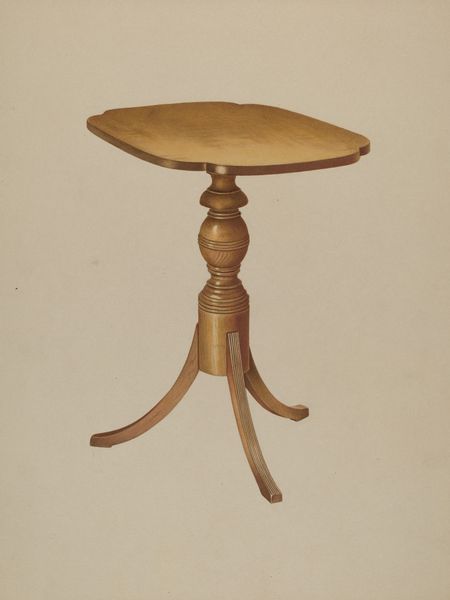
drawing, watercolor
#
drawing
#
watercolor
#
watercolor
#
realism
Dimensions: overall: 35.2 x 24.4 cm (13 7/8 x 9 5/8 in.) Original IAD Object: none given
Copyright: National Gallery of Art: CC0 1.0
Editor: Here we have Fred Weiss's "T-base Candle Stand," created around 1936, rendered in watercolor. It’s a surprisingly straightforward depiction of a common object, focusing on the structure. What's your perspective on this piece? Curator: From a materialist viewpoint, I’m immediately drawn to the means of its creation. It’s watercolor, typically associated with studies or preliminary sketches, but here it documents a utilitarian object, a candle stand. The drawing highlights not just the object itself but the social context surrounding its production and consumption. Who was making these candle stands, and for whom? Was this a mass-produced item, or something crafted individually? Editor: So you're focusing less on the art itself and more on what it represents about manufacturing practices? Curator: Exactly. The artist’s choice to depict this particular object and the decision to render it in watercolor force us to consider the hierarchy between art and craft. Is this documentation, celebration, or perhaps a subtle critique of consumer culture during the Depression era? Watercolor allows a quick rendition, but it also might denote a level of artistic merit placed onto an otherwise common, even mass-produced, commodity. Editor: That’s interesting; I hadn’t thought about the choice of medium as commentary. The realism makes it feel like a direct representation. Curator: The realism is purposeful. Think about the labor involved, not just in producing the candle stand, but also in creating this image. It’s a study in material culture, drawing attention to the processes and materials that shape our everyday lives. What kind of wood was this? How available? Where were these sold? Editor: I suppose it elevates the mundane. I'll definitely look at watercolors of everyday objects differently. Curator: It's a prompt to examine the labor, materiality, and consumption intertwined in even the simplest designs. It forces you to ask ‘how’ and ‘why’ beyond aesthetic appeal.
Comments
No comments
Be the first to comment and join the conversation on the ultimate creative platform.
